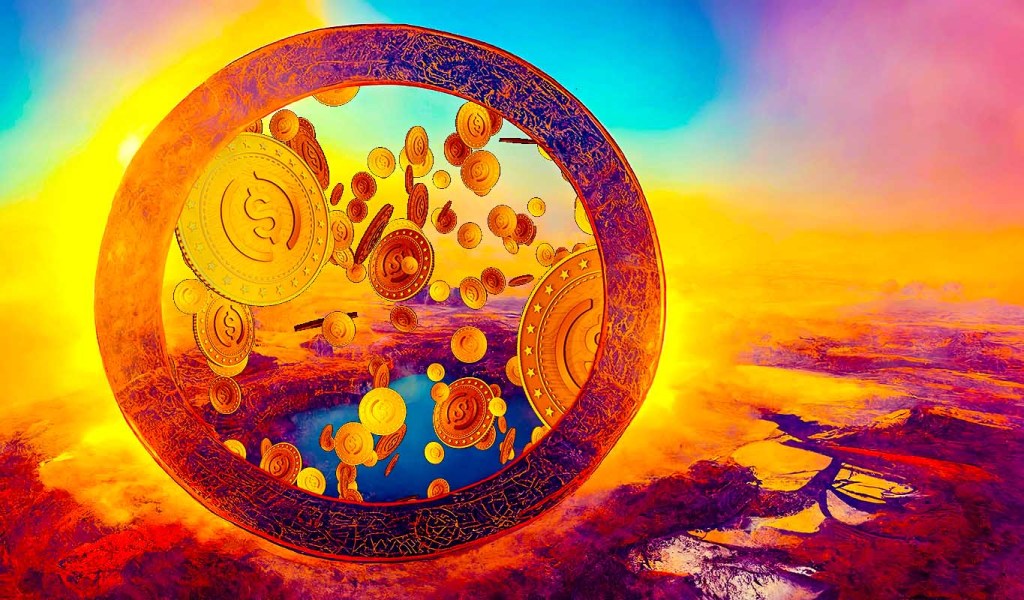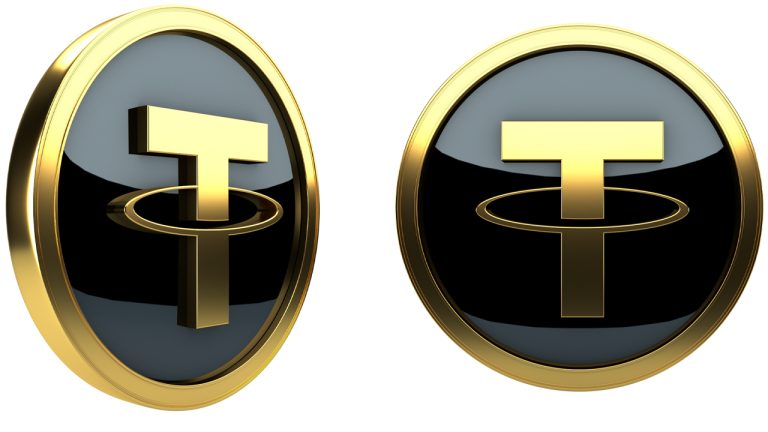
USD Coin (USDC) issuer Circle says it intends to make the second largest stablecoin by market cap available on five additional blockchain ecosystems. The digital financial technology firm says that USDC will be available on layer-1 blockchains Arbitrum One, NEAR Protocol (NEAR), Optimism (OP) and Polkadot (DOT) by the end of the year. The stablecoin will […]
The post Second Largest Stablecoin by Market Cap Expands to Cosmos (ATOM), Polkadot (DOT) and These Three ETH Rivals appeared first on The Daily Hodl.
 After Robinhood Markets launched the company’s beta Web3 wallet on Tuesday and listed the stablecoin usd coin on the exchange platform Robinhood Crypto last week, the company announced a strategic partnership with Circle Financial. The deal revealed on Wednesday will provide Robinhood Crypto and Robinhood Wallet users with the ability to purchase and sell usd […]
After Robinhood Markets launched the company’s beta Web3 wallet on Tuesday and listed the stablecoin usd coin on the exchange platform Robinhood Crypto last week, the company announced a strategic partnership with Circle Financial. The deal revealed on Wednesday will provide Robinhood Crypto and Robinhood Wallet users with the ability to purchase and sell usd […]
Speaking with Cointelegraph, Circle’s vice president of Product Joao Reginatto emphasized that devs soon won’t care what blockchain they build on, as interoperability will be key.
USD Coin (USDC) issuers Circle have announced that it will soon roll out its stablecoin across five additional networks including Polkadot, Optimism, NEAR, Arbitrum and Cosmos.
The firm first dropped the news at the Converge22 event on Sept. 28, and noted that support for most of these blockchains will be rolled out by the end of 2023, while USDC on Cosmos will go live at the start of 2023.
In a Sept. 28 statement, Circle’s vice president of Product Joao Reginatto emphasized that the expansion of USDC will provide “greater liquidity and interoperability within the crypto economy,” especially for the commercial sector.
“Extending multi-chain support for USDC opens the door for institutions, exchanges, developers and more to innovate and have easier access to a trusted and stable digital dollar,” he said.
3/ Upon launch, developers will be able to use Circle APIs for fiat on/off-ramps to and from USDC in their products, as well as programmable wallets infrastructure.
— Circle | #ConvergeSF22 | Sept 27-30 (@circlepay) September 28, 2022
In a follow-up interview with Cointelegraph, Reginatto outlined that while Circle initially built USDC on Ethereum as move of the development and activity was happening there, it always had a vision that the future would be a “multichain world.”
As such, Circle is expanding USDC support under the premise of devs preferring interoperability over working with just one network:
“We knew already at the time that there were a lot of interesting things happening in other ecosystems, and we thought that over time developers and application builders; they are not going to be so much concerned about the Layer 1 or the Layer 2 infrastructure that they're using.”
“They will want interoperability, they will want flexibility to be able to port their solutions across ecosystems,” he added.
Reginatto did note however, while Circle is pushing ahead with expanding USDC support, given the current size of the stablecoin — with a market cap of $48.9 billion — the firm won’t just jump behind any network. He outlined that Circle conducts a lot of due diligence before it selects the next blockchain to work with.
“There's a lot of risks that we have now that we perhaps didn't have two or three years ago. So we take it with a lot of diligence. We have a team of folks across all the functions in the company kind of assessing all these ecosystems and prioritizing them over time.
Once the extra support is officially rolled out, USDC will be available on a total of 13 blockchains. In comparison, Circle’s main competitor Tether currently lists USDT support for eight networks on its website.
“Upon launch, developers will be able to use Circle APIs for fiat on/off-ramps to and from USDC in their products, as well as programmable wallets infrastructure,” Circle stated on Twitter.
Related: Circle CEO says blockchain industry is transitioning from dial-up to broadband phase
Commenting on the use cases for USDC and stablecoins in the current context of crypto, Reginatto highlighted key avenues such as marketplace payouts, remittances, and global settlements for financial institutions.
“There's no real good interoperability across all these banking systems and regional rails. Stablecoins have a really, really good value proposition for that.”
“Stripe utilizing USDC rails for marketplace payouts. Embedding that as part of their marketplace payouts products, just being able to reach people that their customers need to pay out, that with traditional rails they can't reach. So that there is clear concrete value that the substrate can deliver for those kinds of use cases,” he added.
 Just over two months or approximately 83 days ago, the stablecoin usd coin (USDC) had a market valuation of around $55.52 billion and since then, USDC’s market capitalization has lost 12.05%. For most of 2022, the second largest stablecoin by market capitalization, USDC has been above the $50 billion mark, but this week the crypto […]
Just over two months or approximately 83 days ago, the stablecoin usd coin (USDC) had a market valuation of around $55.52 billion and since then, USDC’s market capitalization has lost 12.05%. For most of 2022, the second largest stablecoin by market capitalization, USDC has been above the $50 billion mark, but this week the crypto […]
Allaire believes that privacy and identity are two fundamental pillars of a new Web3.
At the Converge22 conference in San Francisco, Jeremy Allaire, CEO of stablecoin issuer Circle, said that the world is finally moving from the speculative value phase of crypto to the utility phase. Drawing parallels to the early days of the internet, he said:
“It is an architecture that the internet was founded on many decades ago — this idea of open networks, of open standards and protocols, of connecting entities, devices and people in interoperable ways, of a globally intertwined world of decentralized systems.”
As told by Allaire, there are currently on-chain mechanisms to ensure safe, trustworthy interactions between crypto users. However, there need to be “advancements” in technologies such as zero-knowledge proofs that prove identities and credentials while simultaneously ensuring individuals’ privacy:
“People need to be able to interact with apps, and services, and content and transactions without knowing that they’re using crypto. I don’t know I’m using SMTP [Simple Mail Transfer Protocol] when I send an email with Gmail — I do know that, but a lot of people don’t know that, and that’s okay.”
Allaire explained that for mass crypto adoption to happen, participants would need to be introduced to a much more simplified version of the underlying technology. “People don’t need to know what chain they’re on or even what stablecoin they’re using,” he said. “They just need to know that it’s frictionless interaction with data and money.”
Finally, Allaire said we are reaching the next “broadband” phase of blockchain, referencing the dial-up era in the early days of the internet. “We need safe, scalable and energy-efficient public blockchains” just as we did with the internet, he stated, raising the example of new developments such as Ethereum’s recent move to proof-of-stake and the emergence of layer-2 and layer-1 scaling models. He said the step was “necessary for this [blockchain] to become something that is used by everyday society for mission-critical applications.”


The stablecoin's top-rival Tether has witnessed growth in its market cap, on the other hand.
The market capitalization of USD Coin (USDC), a stablecoin issued by U.S.-based payment tech firm Circle, has dropped below $50 billion for the first time since January 2022.
On the weekly chart, USDC's market cap, which reflects the number of U.S. dollar-backed tokens in circulation, fell to $49.39 billion on Sep. 26, down almost 12% from its record high of $55.88 billion, established merely three months ago.

In contrast, the market cap of Tether (USDT), which risked losing its top stablecoin position to USDC in May, crossed above $68 billion on Sep. 26, albeit still down 17.4% from its record high of $82.33 billion in May 2022.
The divergence between USDT and USDC shows investors' renewed preference for the former. Let's take a look at the factors boosting Tether as the top stablecoin.
Binance, the world's largest cryptocurrency exchange by volume, announced earlier in September that it would convert its users' USDC balances for its own stablecoin, Binance USD (BUSD). The conversion will commence on Sep. 29 and does not apply to USDT.
The exchange said it wants to "enhance liquidity and capital-efficiency for users" via what appears to be a forced conversion in an increasingly competitive stablecoin sector. As a result, Binance suspended spot, future and margin trading in USDC.
8/ 1. Binance's forced "Auto-conversion" is blatantly monopolistic behavior of a typical FinTech company
— Momentum 6 (@Momentum_6) September 21, 2022
They are no better than traditional banks that have the power to freeze or take control of user funds
Where is the decentralized future that #Web3 users were promised?
USDC's market cap has plunged by $9.5 billion since the announcement.
Following Binance's footsteps, the India-based cryptocurrency exchange also stopped deposits of USDC beginning Sep. 26.
Related: Binance: No plans to auto-convert Tether, though that ‘may change’
The USDC supply help by top 1% addresses (aka whales) has dropped to 88.36% in September from its year-to-date high of 93.84% in February, according to data collected by Glassnode.

Interestingly, the plunge accelerated after Terra, a $40-billion "algorithmic stablecoin" project, collapsed in May, stirring a negative sentiment toward the entire stablecoin industry.
For instance, the total market cap of all stablecoins saw the worst correction in 2022, dropping from a February high of $97.37 billion to $80.65 billion in September, according to CryptoQuant.

The USDC market cap plunge has also accelerated after the U.S. Treasury imposed sanctions on crypto mixing service Tornado Cash over money laundering concerns.
Circle responded to the sanctions by freezing all USDC wallets owned by Tornado Cash. The firm also prevented addresses that may be associated with the banned mixing service from using USDC. In contrast, Tether avoided blacklisting Tornado Cash addresses.
Independent market analyst Geralt Davidson treated Circle's response to the Tornado Cash sanction as a cue that holding USDC is riskier compared to its stablecoin rivals.
"People now have realized there is more risk holding USDC, Circle blacklisted all the USDC on Tornado Cash addresses sanctioned by US Treasury," he noted in August 2022, adding:
USDC seems like the only token being blacklisted, while other ERC-20 tokens were not.
Davidson also treated Tornado Cash as one of the reasons why USDC whales have been dumping the stablecoin in recent months.
The views and opinions expressed here are solely those of the author and do not necessarily reflect the views of Cointelegraph.com. Every investment and trading move involves risk, you should conduct your own research when making a decision.

Retail trading giant Robinhood just added top stablecoin USD Coin (USDC) to its list of supported digital assets as the platform sees reduced trading activities due to the crypto winter. In a new announcement via Twitter, the company says that the second largest dollar-pegged stablecoin is now included in its trading roster, effective September 21st. […]
The post Trading App Giant Robinhood Adds Stablecoin US Dollar Coin (USDC) to Roster appeared first on The Daily Hodl.

The crypto derivatives exchange has partnered with Circle to expand its suite of USDC offerings; traders will also have access to auto conversions between the stablecoin and U.S. dollars.
Crypto derivatives exchange Bybit has partnered with stablecoin issuer Circle Internet Financial to expand its suite of spot trading pairs denominated in USD Coin (USDC) — a move the company says will increase retail and institutional access to USDC-settled products.
Under the partnership agreement, Bybit will expand its USDC spot pairs to include several additional cryptocurrencies and make auto conversions between the United States dollar and USDC available, the company disclosed Wednesday. Bybit said it intends to collaborate with Circle on other initiatives to boost stablecoin and crypto adoption.
Currently, Bybit supports around 35 USDC spot pairs, according to a Circle representative.
A major U.S. investment bank eyes the crypto derivatives market.
— Cointelegraph (@Cointelegraph) June 1, 2022
Goldman Sachs is reportedly trying to onboard some of its derivatives products into @FTX_Official crypto derivatives offerings. https://t.co/c0467Knv9U
(Reporting via @_prashantjha)
Bybit began offering USDC options and perpetual contracts in April of this year, giving traders more ways to hedge against movements in the spot market. At the time, Bybit CEO Ben Zhou told Cointelegraph that the options rollout was in response to growing user demand. On Wednesday, Zhou said the launch of USDC options had been a success and that Bybit was looking to “further develop our working relationship with Circle.”
In addition to USDC options, Bybit plans to make Ether (ETH) and Solana (SOL) options available to traders soon.
Related: Bitcoin derivatives show a lack of confidence from bulls
Circle’s USDC is the world’s second-largest stablecoin with a market capitalization of $52.3 billion, according to CoinMarketCap. Only Tether’s USDT commands more market penetration with a $67.6 billion market cap.
Circle released a full breakdown of its USDC reserves in July for the period ending June 30, 2022. At the time, about 75.6% of its backing was in short-term U.S. Treasury bills. The remainder of its position was in cash deposits at domestic banks.
 While the crypto community is still talking about the U.S. government banning the ethereum mixing platform Tornado Cash, the stablecoin issuer Tether Holdings Limited revealed on Wednesday that the company would not “freeze Tornado Cash addresses.” Tether’s recently published blog post about the subject says the company is waiting for instructions from law enforcement. Tether […]
While the crypto community is still talking about the U.S. government banning the ethereum mixing platform Tornado Cash, the stablecoin issuer Tether Holdings Limited revealed on Wednesday that the company would not “freeze Tornado Cash addresses.” Tether’s recently published blog post about the subject says the company is waiting for instructions from law enforcement. Tether […]